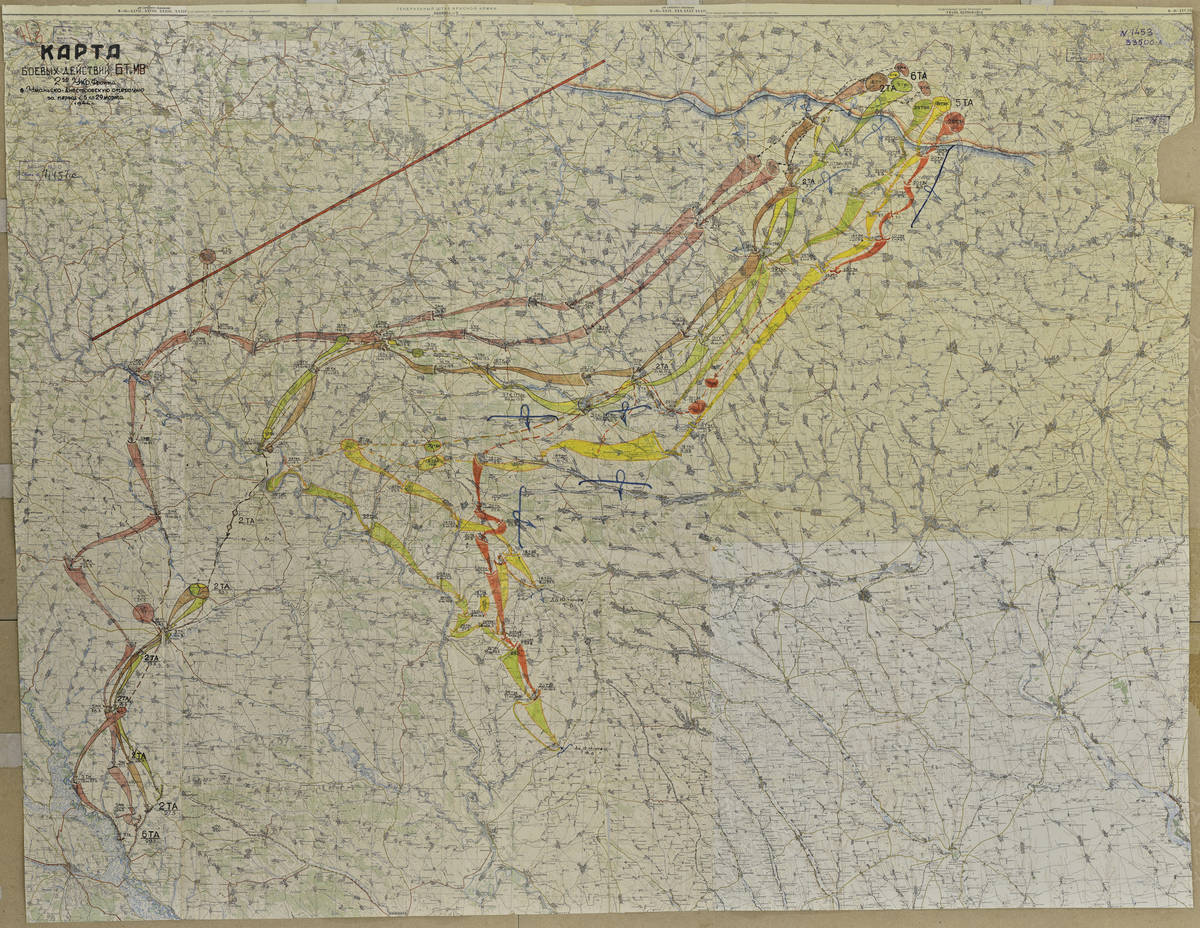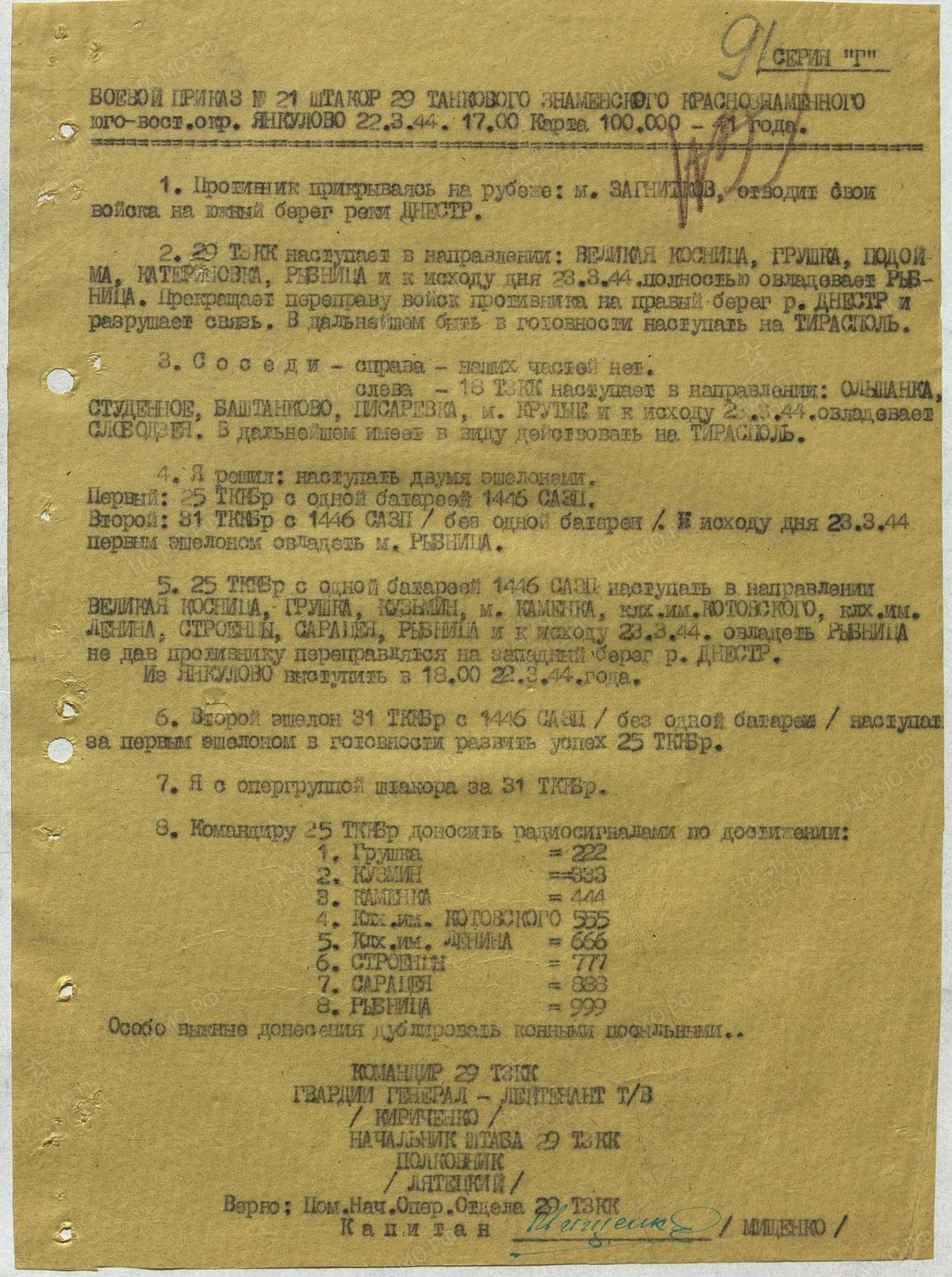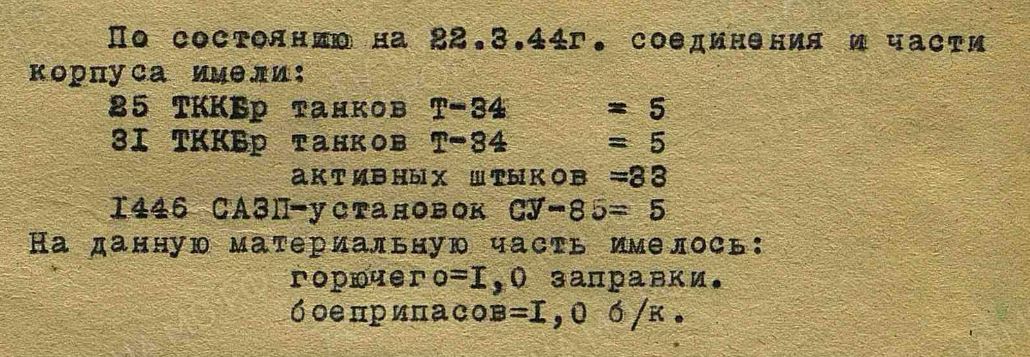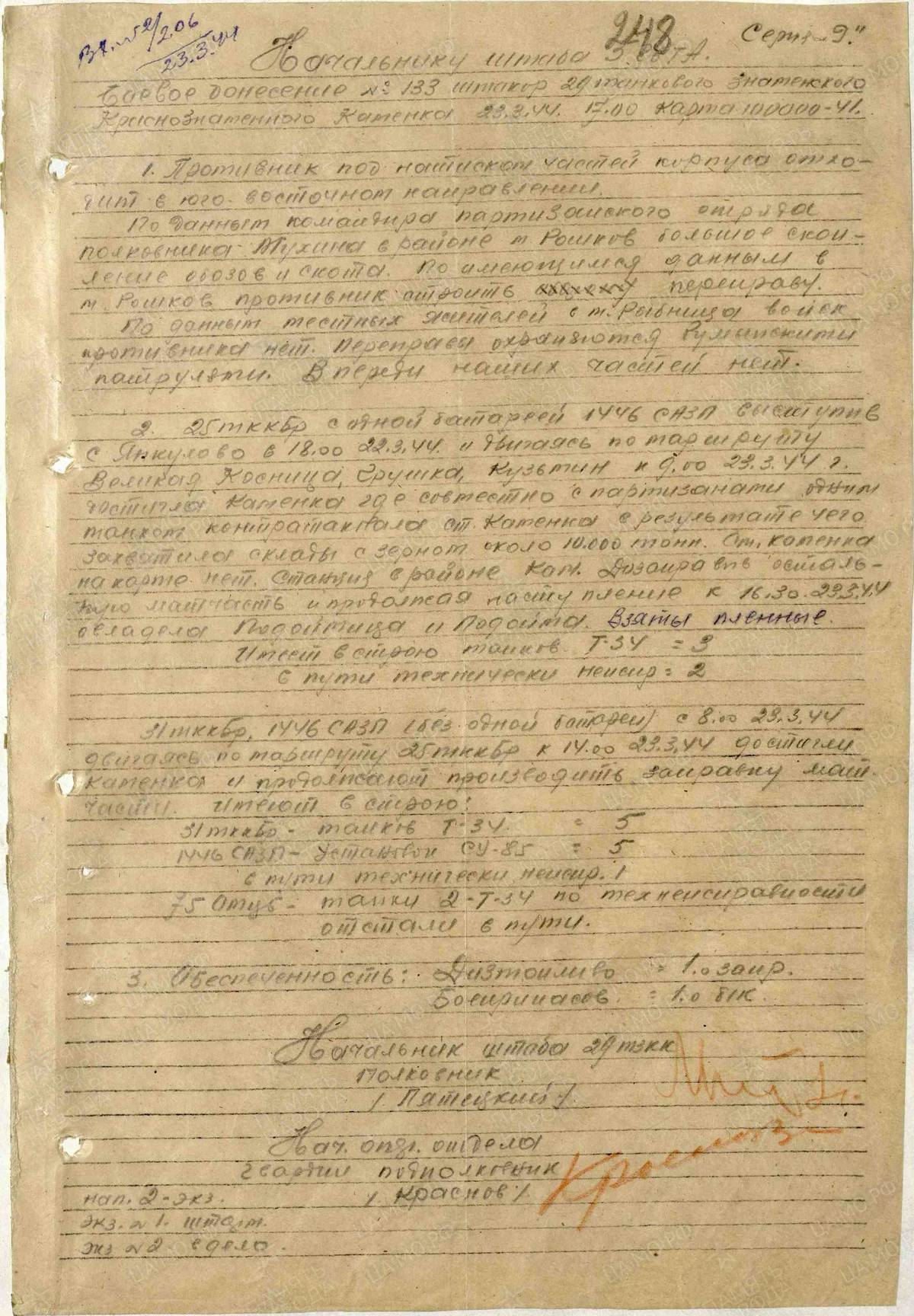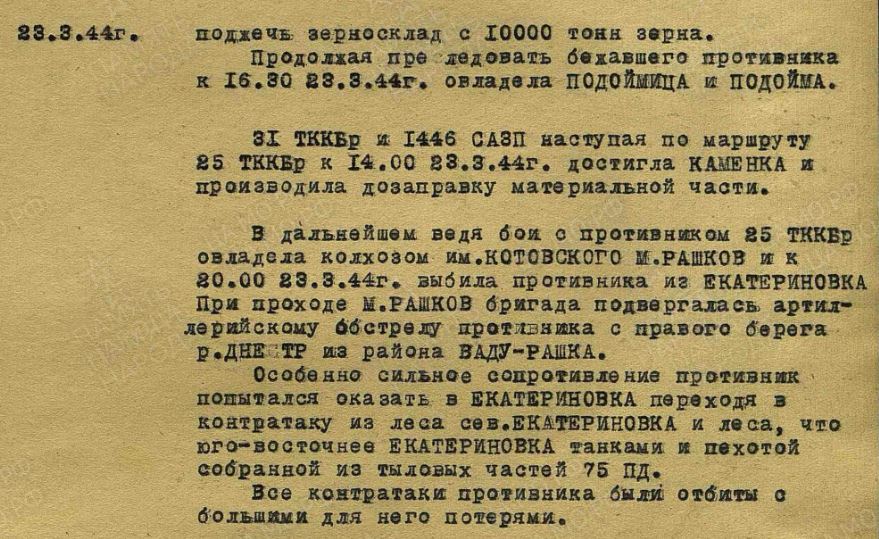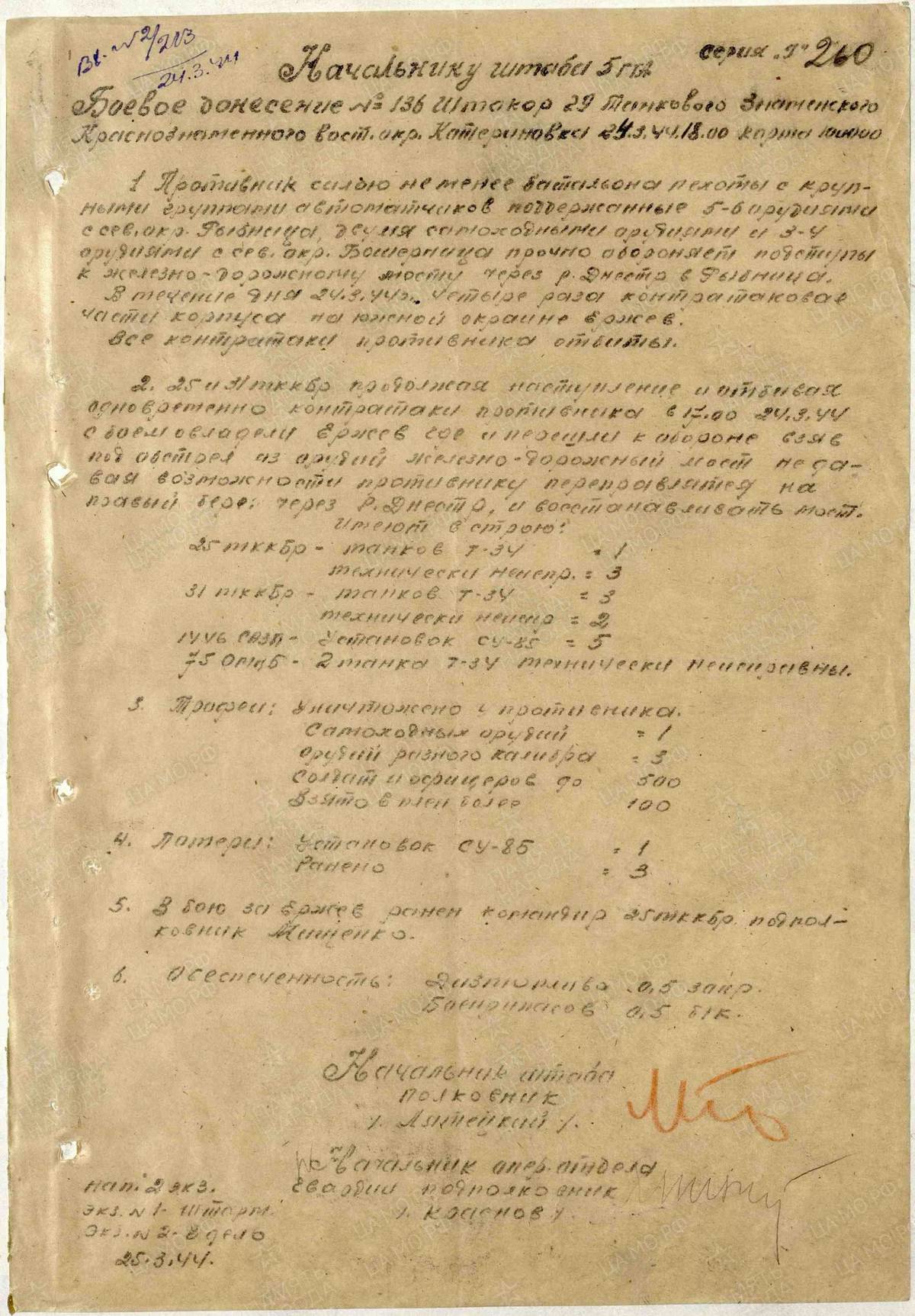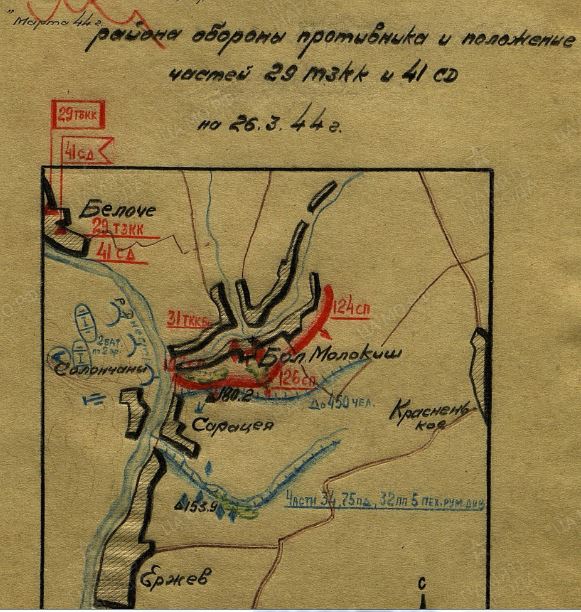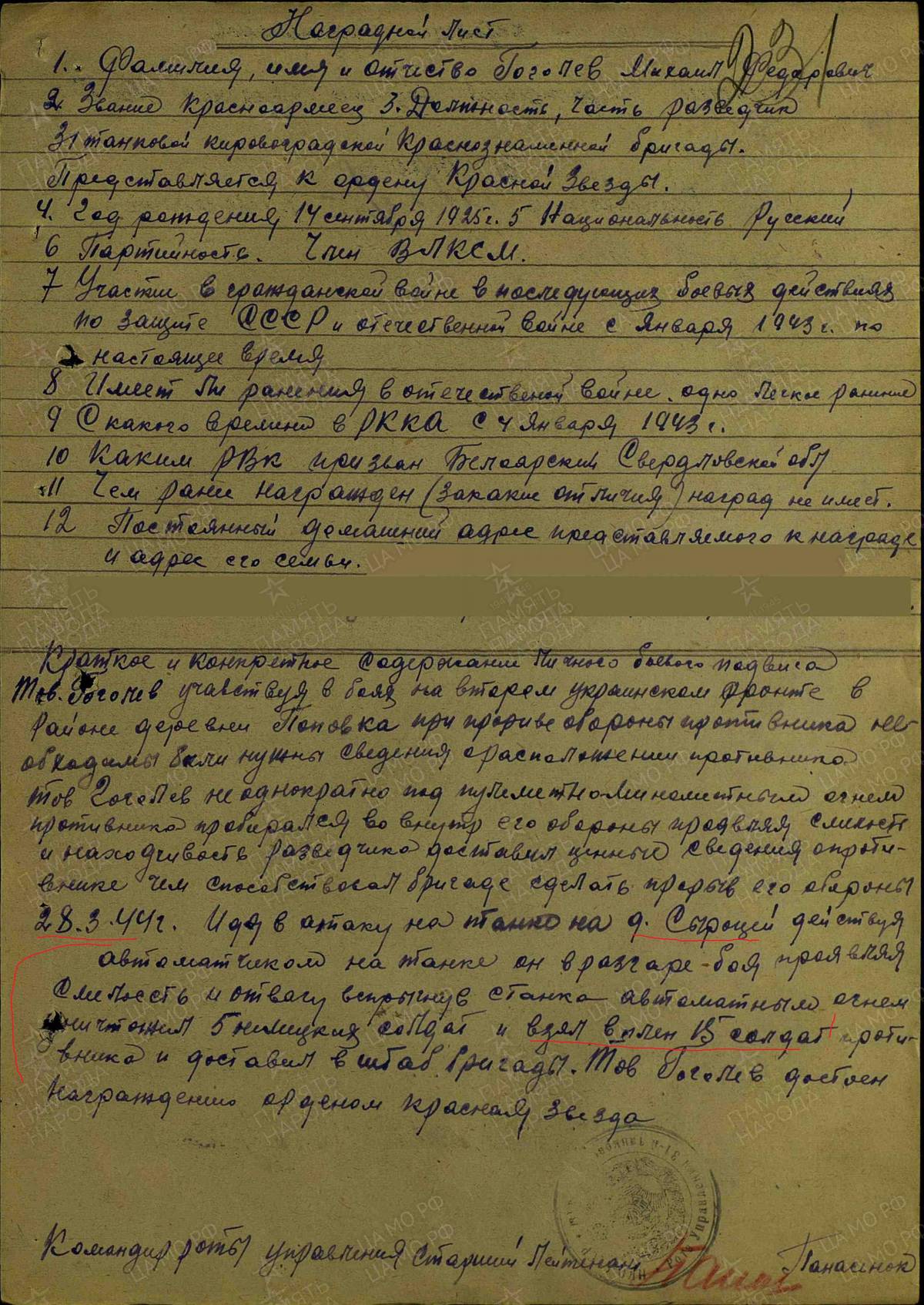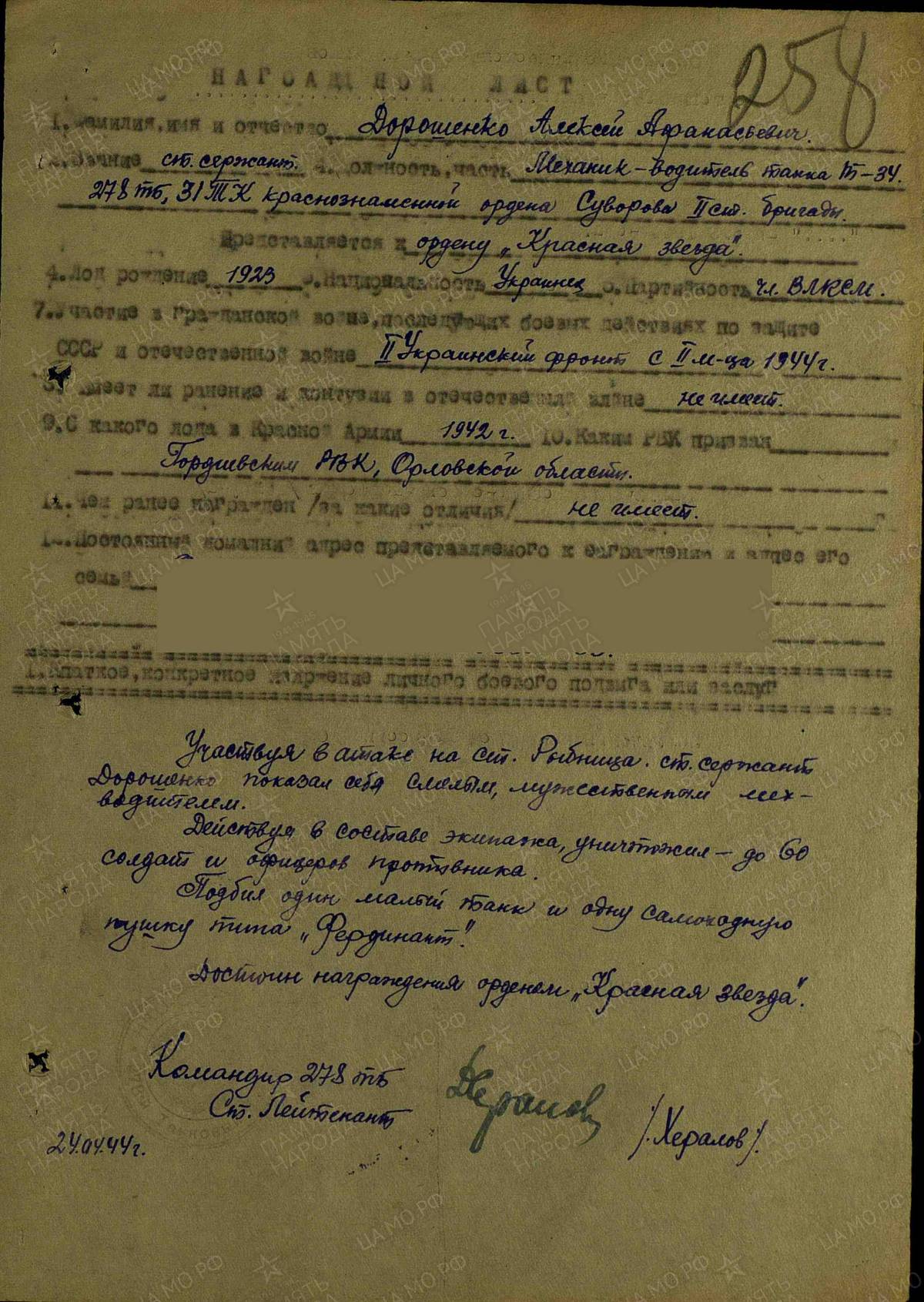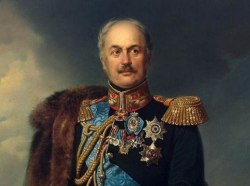Pridnestrovie marks the 75th anniversary of the liberation from the Fascist occupation. In March 1944, the Red Army together with partisans drove Wehrmacht from the northern regions, and in April, the southern cities and villages were cleared of invaders. One can find out how it had been done from the documents of the fighting units, which today, thanks to the website Memory of the People, are publically available. Sources contain a description of the events literally by the hour. Novosti Pridnestrovya prepared a compilation that allows to reconstruct the spring of liberation. They will talk about how the partisans prevented the invaders from destroying Kamenka infrastructure and how the T-34 met with the “Tigers” near Rybnitsa.
Marshal Konev's Tank Trident
The territory of Pridnestrovie was being occupied from summer of 1941 until spring of 1944, that is, two and a half years. They are remembered as the time of mass deportations, ethnic cleansing, forced labor and grocery requisition. An idea of what had been happening during the occupation can be gotten here.
Our cities and villages were included in the so-called "governorship of Pridnestrovye", from where it was decided to "drain all resources" in the "interests of the Romanian state." Therefore, when they say “Pridnestrovye”, they do not mean a specific geographic region, but a colonial territory ruled by an occupation administration.
But when the spring of 1944 came, the 2nd and 3rd Ukrainian fronts were rapidly approaching Dniester. In early March, three tank armies attacked the Germans almost simultaneously, marking the beginning of a large-scale Uman-Botosha operation. This armored trident had literally buried Wehrmacht`s defense in the ground, weathered from the spring thaw. Marshal Ivan Konev, commander of the 2nd Ukrainian Front, learned the lessons of the summer of 1941 well: then, one of the success factors of the Germans was the rapid advance of large armored groups into the deep rear of the Red Army units with their subsequent entourage.
In the spring of 1944, the Red Army used this tactic: if the 2nd Ukrainian Front succeeded, the entire southern group of the Romanian-German armies would be pressed against the Black Sea. But if two and a half years before, the panzer divisions of the Wehrmacht were riding around dry summer steppes, then the Red Army tanks had to wade through the spring mud, which, after a snowy winter, not only fields, but also dirt roads turned into. But at that moment, the T-34 showed its true colors. No wonder this car is recognized as the best medium tank of the Second World War.
Already on March 10, they took Uman, and on March 15 they came to the bank of the Dniester at Mogilyov-Podolsky. A little bit to the south, in the area of Yampol, the 29th Tank Corps approached. It was the vanguard of the 5th Guards Tank Army of the legendary marshal of the armored forces Pavel Rotmistrov. Thus, the Russians turned out to be deep in the rear of the Germans. How this happened can be seen on the clickable map, also available on the Memory of the People website.
The Wehrmacht began to quickly withdraw its forces to the west, trying to escape from the emerging loop. Under those conditions, the railway bridges in Rybnitsa and Tiraspol played a key role, and the Germans decided to keep them at any cost: it was possible to transfer forces over it to stop the breakthrough of the Red Army.
Reaching the Dniester, the Soviet army did not stop. One group of armored units crossed over to its right bank and rushed southeast towards Balti and the Prut River. But Rotmistrov`s tanks turned south and went along the Dniester. Thus, an armored trident began to cover the entire southern group of the Wehrmacht and rushed to the Black Sea coast.
How T-34 Tanks Helped the Partisans in Kamenka
March 22, 1944 in the town of Yankulovo on the Dniester, Lieutenant General Kirichenko opened the package with an order from the army commander Rotmistrov. His 29th tank corps was ordered to move south, liberate Rybnitsa, seize the railway bridge and be ready to attack Tiraspol.
Kirichenko decided to move to Kamenka in two waves. From the report on the hostilities of the 29th tank corps:
After a long transition and fighting for Uman, the corps had only 10 T-34s and 5 self-propelled artillery mounts at its disposal.
By this time, Kamenka and several neighboring villages were already in the hands of the partisans. On March 18 the Sovetskaya Moldaviya detachment of Jacob Mukhin entered Oknitsa and Kuzmin, and appeared in Kamenka on March 20.
“On the outskirts of Kamenka, the partisans of the Sovetskaya Moldaviya detachment were met by enemy rifle-and-machine-gun fire. Having broken through the barrage and dispersed the police, the partisans entered the regional center of the MSSR Kamenka at 14 o'clock on March 20, 1944.” Dmitry Elagin,"Partisans of Moldova."
“On March 20, we left for Kamenka. The Germans stood in the village of Podoyma. On March 21st, I set up a post in Podojmitz and, also at the station of the railways in Kamenka, where there were up to 10 thousand tons of food. Fearing that the Germans could destroy all this, we decided to stay in Kamenka until the Red Army units arrived.” From the report of Jacob Mukhin.
Mukhin's troop was gathered as early as February 6, 1944, and initially consisted of 19 fighters. They were to conduct subversive actions in the rear of the enemy and in every way interfere with the occupation authorities. During the raid, local resistance groups joined the troops, so that not 19 but 120 partisans entered Kamenka. They had to intercept a large cargo of food, which was stationed at a narrow-gauge railway station connecting Kamenka and Rybnitsa.
“The captured Hitler soldier showed that the German battalion occupying the villages of Podoyma and Podojmitz should cover the crossing of the retreating Fascist troops in the Rashkov region and destroy the enterprises, the state farm, large warehouses of grain and tobacco in Kamenka. The detachment Command decides to foil the designs of the Nazis to destroy Kamenka. An outpost of 50 men under the command of G.A. Farberov was stationed towards Podoyma and Podojmitz. To the help of the partisans, the underground workers from Kamenka arrived.” Dmitry Elagin, "Partisans of Moldova."
“On March 20, the Nazis in groups of 60-70 people tried to enter Kamenka repeatedly, but, having suffered losses, they moved back to their starting positions ... At 10 o'clock on March 23, the Germans of 120 people with three mortars and 6 machine guns opened an attack on the station. At the cost of large losses, they managed to make partisans squeeze up, to undermine the locomotive, several cars and prepare warehouses for destruction. At this tense moment, four Soviet tanks burst into Kamenka. Partisans under the command of A.P. Svalov again beat out the Nazis from the station and took the grain warehouses under their protection. The other part of the detachment under the command of the commander A.V. Smirnov launched an attack on Podoyma and Podojmitz under the cover of three tanks.” Dmitry Elagin, "Partisans of Moldova."
It seems that the 25th Tank Brigade arrived at Kamenka just in time.
Fresh forces of the 31st Tank Brigade and self-propelled guns followed. So the Germans are trying to quickly retreat to the south, which can be seen in this photo.
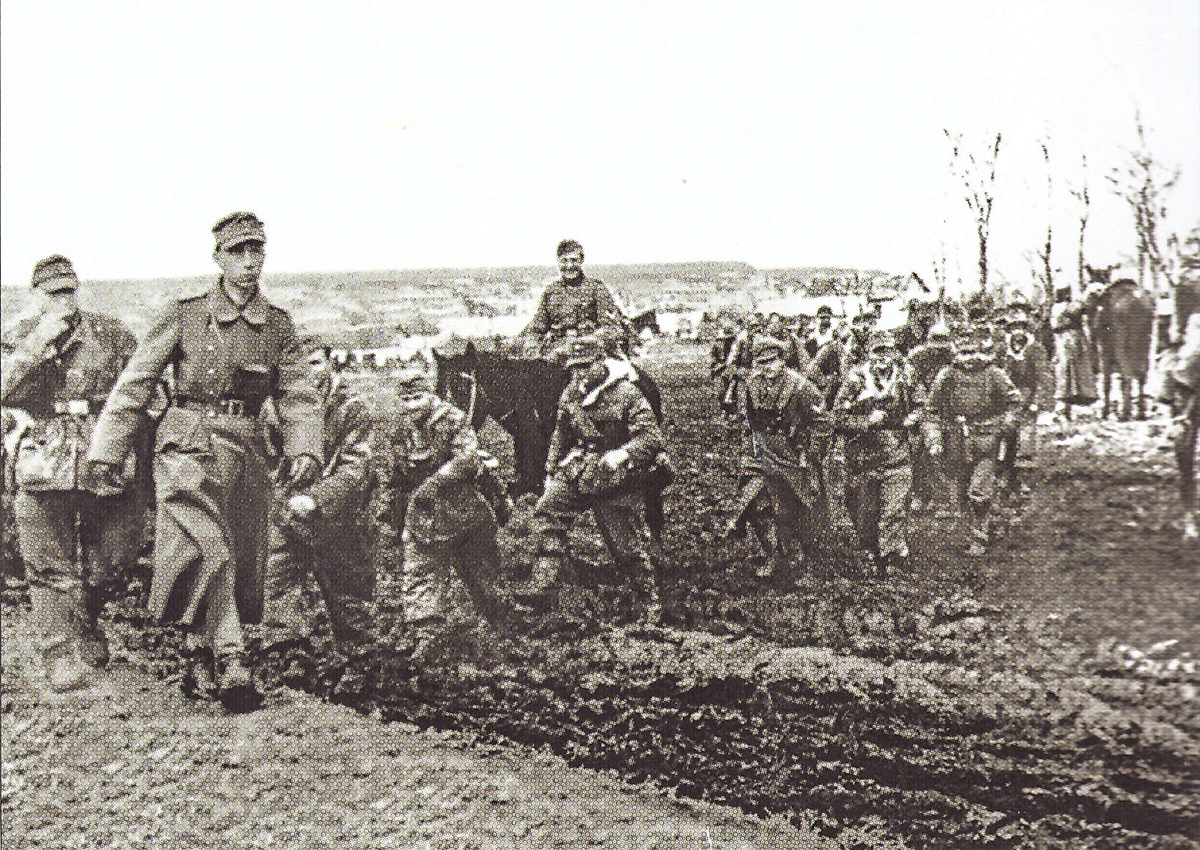
German troops retreat in the vicinity of Kamenka, March 1944. Photo: the album "Pridnestrovie during the Second World War"
The tanks were moving fast and in the late afternoon of March 23, they already appeared in Podoyma and Podojmitz. But they met with resistance again in Katerinovka and Rashkov.
The next day, the armored units had already reached the Rybnitsa suburb - the village of Yerzhovo.
Based on the war dispatch of the 29th tank corps, the Germans did not give Yerzhovo up without a fight.
"Tiger" Counterattack
The struggle for Rybnitsa, which lasted for a week, begins with this moment. It all began with a tank battle in Yerzhovo. Just at the moment of the “thirty-fours” approach, there were platforms with German tanks on the railway station. And not just tanks, but powerful and dangerous "T-VI", better known as "Tiger".
Here is how it is described in the historical reference of the 29th tank corps:
“Seeing the threat of losing Rybnitsa, the Germans threw heavy tanks into the counterattack and up to the infantry battalion. Mines and shells were exploded everywhere; tanks were directly firing at the enemy’s advancing infantry. The brigade commander, Lieutenant Colonel Mishchenko, personally led the defense organization. The Germans moved back. After 20 minutes, the counterattack resumed, but this one was repulsed with heavy losses for the enemy. The third counterattack began. The enemy threw tanks up to 2 infantry battalions. They started to get around brigade from 3 directions. Tanks of the enemy hit direct fire on the streets of the village and burned both self-propelled guns. Snipers and submachine gunners of the enemy fired at the fighting back fighters. The enemy slipped into the village. A desperate struggle began. Captain Shkurdenko together with senior sergeant Matveev opened sustained automatic fire at the attacking Germans and fought back to the last bullet. They died as heroes in this battle. Unable to withstand the onslaught of the enemy, with was five time superior, the brigade, having lost two self-propelled guns, retreated beyond the river B. Molokish and took up the position at heights east of the village B. Molokish.”
At this time, the infantry of the 41st Guards Division of Major General Konstantin Tsvetkov approached Bolshoi Molokish. On March 24, the rifle units finally caught up with Rotmistrov’s tanks, which was very useful. North of Rybnitsa, near the village of Saracei, the Germans built a solid defense literally within 24 hours. In the spring of 1944 the Wehrmacht was still very strong.

The village of Saracei, between Yerzhovo and Bolshoi Molokish, had been the point of confrontation between the parties for several days. The Germans also tried to keep a large perimeter around Rybnitsa. Thus, the German armored vehicles (among which were the "Tigers") closed the passage to Gershunovka and the station Kolbasna, covering its right flank.
About what happened near Saracei, you can find out from the battle conduct reports of the 29th tank corps. The documents show that the Germans had also used airpower. According to the number of mutual attacks, the battles were quite intense.
Battle scenes are also reflected in prize papers. In the prize paper of the Red Army soldier Mikhail Gogolev there is a description of his actions in battle, which brought him the Order of the Red Star.
With no breakthrough in frontal attacks, the Red Army attempted to bypass Rybnitsa from the east. Overcoming the barriers of the Wehrmacht, they occupied the Kolbasna station on March 29 and began to move to the village of Voronkovo. Anticipating the imminent fall of their defenses, the Germans decided to destroy the ammunition depots so that they would not get to the Soviet fighters, to blow up the Rybnitsa bridge across the Dniester, and thereby complicate the further push of the Red Army to the west.
At this moment, Rybnitsa’s patriots are stepping forward from the resistance movement. At the Rybnitsa railway station, they cleared 13 wagons with equipment and mines, 8 gasoline tanks, 17 wagons with valuables stolen by the enemy, and prevented German requisition. However, the Germans did managed to blow up the bridge across the Dniester.
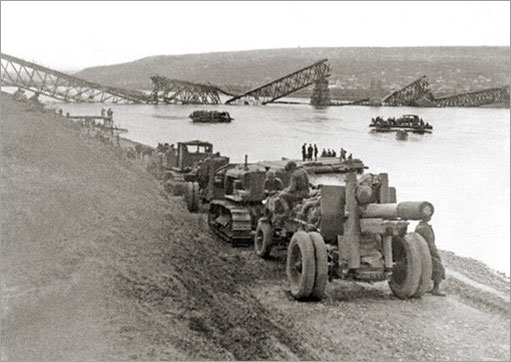
Destroyed bridge across the Dniester River in Rybnitsa, March 1944. Photo: album "Pridnestrovie during the Great Patriotic War"
Tsvetkov, supported by Kirichenko tanks, entered Rybnitsa and attacked the railway station. In this battle, several T-34 crews displayed exceptional fighting qualities.
The inertia of the offensive was so powerful that on the same day, on March 30, the Soviet troops immediately liberated the villages of Gidirim, Zozuliany and Popenki, pushing the remnants of the defending German forces south.
It is possible that at such a pace the Red Army would have been able to liberate Dubossary and Tiraspol within a few days. At this point, the command radically changes its plans. Further movement from Rybnitsa to Tiraspol was stopped, and the tank army of Rotmistrov was transferred far to the west. It was supposed to strengthen the attack on the Romanian city of Tirgu Frumos. Its capture opened the way to the capital of an ally of Germany, and at that time had a chance to withdraw Romania from the war. The command decided to use it, but the spring thaw did not allow it to gain the necessary pace. As a result, the Germans were able to get ahead of the Soviet soldiers and put up powerful barriers. Tiraspol and the southern regions of Pridnestrovie were liberated by the 3rd Ukrainian front of Marshal Rodion Malinovsky, who started the Odessa offensive on March 27, during the peak of the battle for Rybnitsa.
Alexander Koretsky
The website Memory of the People materials were used in preparing this article.


